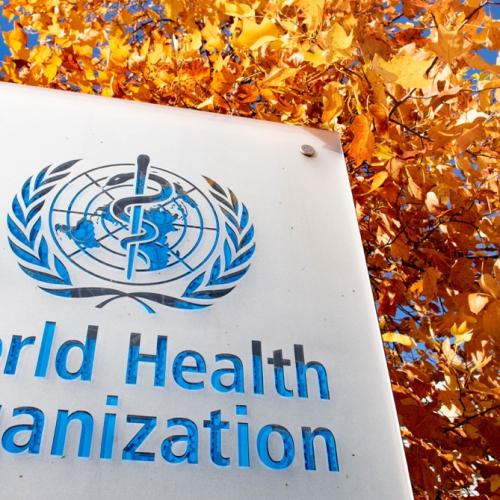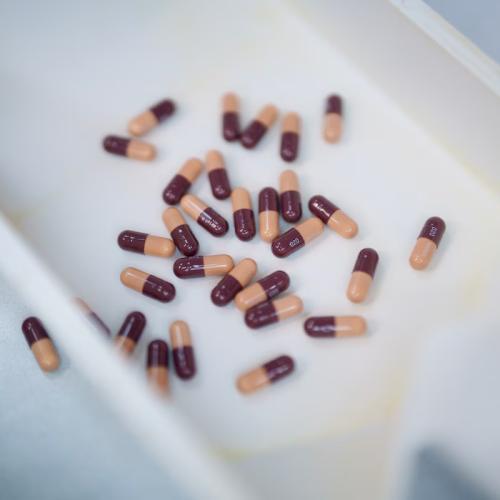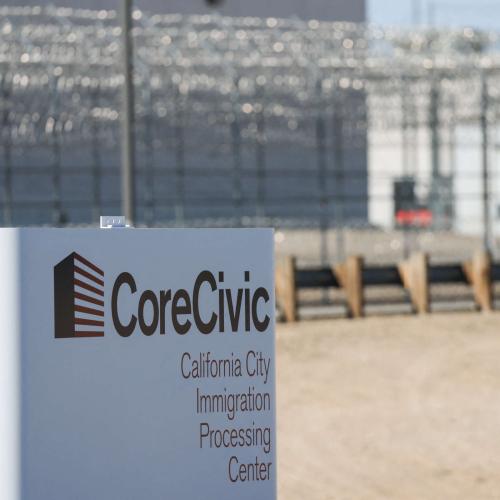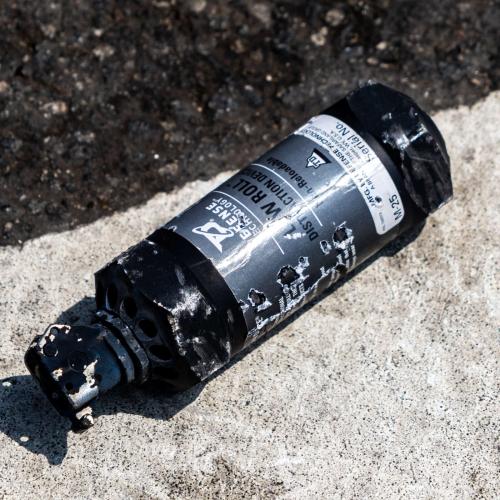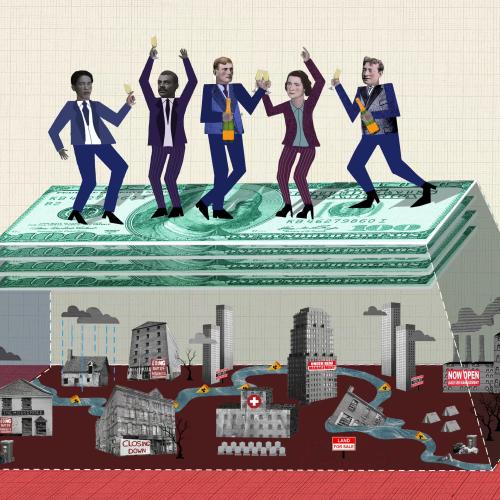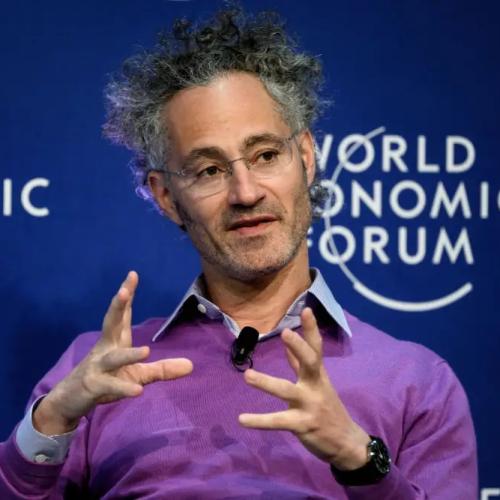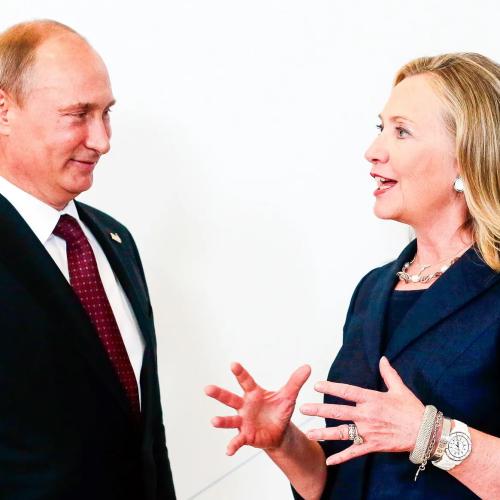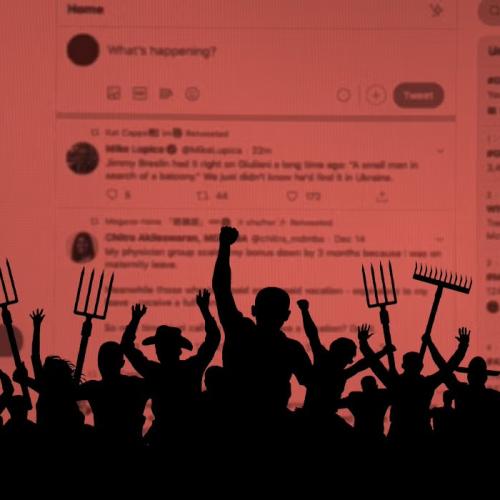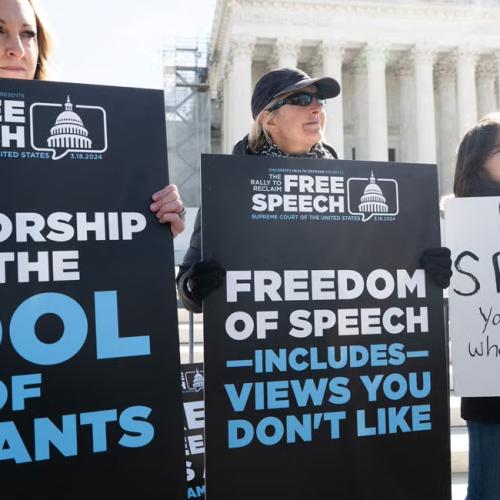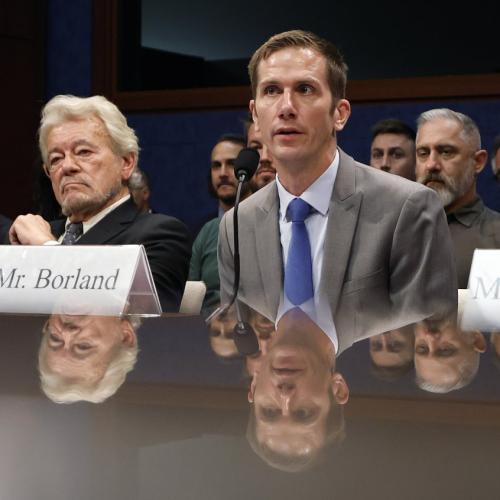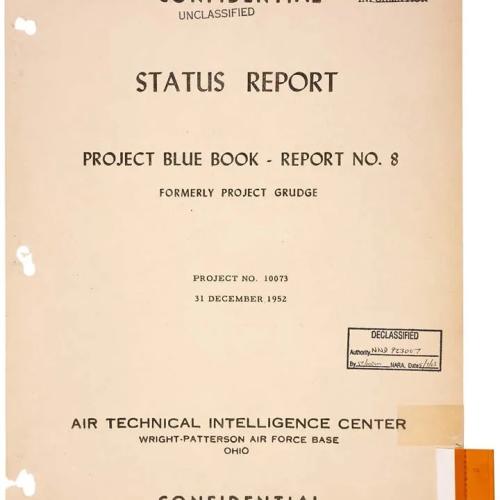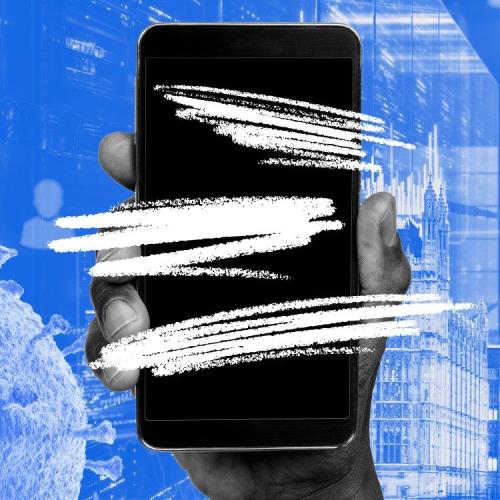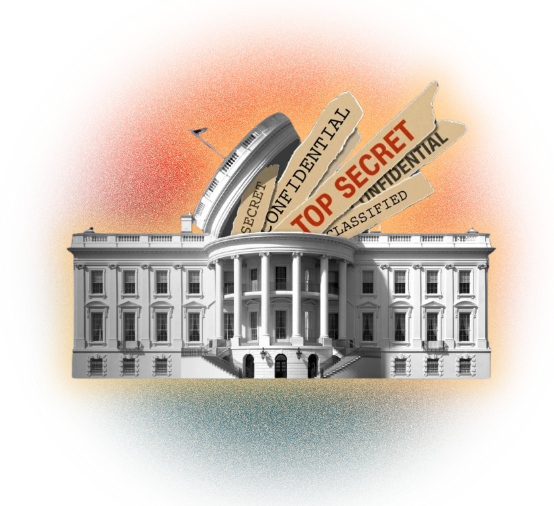Media Articles
Below are key excerpts of revealing news articles from reliable news media sources. If any link fails to function, a paywall blocks full access, or the article is no longer available, try these digital tools.
For further exploration, delve into our comprehensive Information Centers.
Loneliness has become a global public health concern. Countries including Britain and Japan have appointed “ministers of loneliness” to help tackle the problem. In the United States, then-Surgeon General Vivek H. Murthy issued a public health advisory on loneliness, stating that the risk for premature death from loneliness is akin to smoking up to 15 cigarettes a day. What if, instead of trying to “fix” the individual, strategies focused on shaping the environment in a way that facilitates social connection? Recently, researchers have been trying to leverage nature as a way to bring people together and reduce negative feelings about social isolation. They say living in what is known as a “lonelygenic environment” — one dominated by cars and concrete instead of grass and trees — can cause or aggravate loneliness. Even if you live in a lonelygenic environment, experts say, spending just an hour or two in nature per week ... may help people feel less isolated. One proposed approach for tackling loneliness as a public health issue is through social prescribing, where physicians connect their patients with non-medical services in the community similar to how they prescribe medication. Nature comes in many forms. An ongoing study by [Matthew] Browning and his colleagues investigates the amount of time a representative sample of Americans spends outdoors in nature. “What we find is that nature is, for most people ... watching their kids play soccer outside or grilling in the backyard.”
Note: What if the negative news overload on America’s chronic illness crisis isn’t the full story? Check out our Substacks to learn more about the inspiring remedies to the chronic illness and loneliness crisis! Explore more positive stories like this on healing our bodies and mental health.
In her new book, Bad Company: Private Equity and the Death of the American Dream, journalist and WIRED alum Megan Greenwell chronicles the devastating impacts of one of the most powerful yet poorly understood forces in modern American capitalism. Flush with cash, largely unregulated, and relentlessly focused on profit, private equity firms have quietly reshaped the US economy, taking over large chunks of industries ranging from health care to retail—often leaving financial ruin in their wake. Twelve million people in the US now work for companies owned by private equity, Greenwell writes, or about 8 percent of the total employed population. It is very hard for private equity firms to lose money on deals. They're getting a 2 percent management fee, even if they're running the company into the ground. They're also able to pull off all these tricks, like selling off the company's real estate and then charging the company rent on the same land it used to own. When private equity firms take out loans to buy companies, the debt from those loans is assigned not to the private equity firm but to the portfolio company. It is just not about improving the company at all. It is about, how do we extract money? There was a huge expansion of private equity in the 2010s for the same reason that venture capital exploded: There was a lot of cheap money out there, and cheap money is great for investors.
Note: For more along these lines, read our concise summaries of news articles on financial industry corruption.
In 2022, three U.S. inspectors showed up unannounced at a massive pharmaceutical plant. For two weeks, they scrutinized humming production lines and laboratories spread across the dense industrial campus, peering over the shoulders of workers. Much of the factory was supposed to be as sterile as an operating room. But the inspectors discovered what appeared to be metal shavings on drugmaking equipment, and records that showed vials of medication that were “blackish” from contamination had been sent to the United States. Quality testing in some cases had been put off for more than six months, according to their report, and raw materials tainted with unknown “extraneous matter” were used anyway, mixed into batches of drugs. Sun Pharma’s transgressions were so egregious that the Food and Drug Administration [banned] the factory from exporting drugs to the United States. But ... a secretive group inside the FDA gave the global manufacturer a special pass to continue shipping more than a dozen drugs to the United States even though they were made at the same substandard factory that the agency had officially sanctioned. Pills and injectable medications that otherwise would have been banned went to unsuspecting patients. The same small cadre at the FDA granted similar exemptions to more than 20 other factories that had violated critical standards in drugmaking, nearly all in India.
Note: For more along these lines, read our concise summaries of news articles on Big Pharma corruption.
The Trump administration is discussing policies that would make it harder and more expensive for pharmaceutical companies to advertise directly to patients, in a move that could disrupt more than $10 billion in annual ad spending. Although the US is the only place, besides New Zealand, where pharma companies can directly advertise, banning pharma ads outright could make the administration vulnerable to lawsuits, so it’s instead focusing on cutting down on the practice by adding legal and financial hurdles. The two policies the administration has focused in on would be to require greater disclosures of side effects of a drug within each ad — likely making broadcast ads much longer and prohibitively expensive — or removing the industry’s ability to deduct direct-to-consumer advertising as a business expense for tax purposes. The new policies could threaten a key source of revenue to advertising and media companies, as well as the US pharmaceutical industry. Companies spent $10.8 billion in 2024 on direct-to-consumer pharmaceutical advertising in total. Before the loosening of advertising regulations by the Food and Drug Administration in 1997, US pharma companies had to list all possible side effects for a medication if they wanted to mention which condition the drug being advertised was intended to treat. Reading out a list of side effects took so long it drove up the cost for air time and meant there wasn’t as much broadcast advertising as there is today.
Note: For more along these lines, read our concise summaries of news articles on Big Pharma corruption.
If economic inequality increases within a country, the risk of civil war breaking out grows. This is the finding from a study by the Chair of Economic History at the University of Tübingen. The study has been published in the Review of Income and Wealth. The calculations revealed a statistically significant connection between unequal distribution of income and the outbreak of civil wars. The results can be verified using historical events: for example, land was extremely unequally distributed in Russia before the October revolution of 1917—and this critically contributed to the outbreak of revolution and civil war, a marker that was also identified by the new benchmark with a correspondingly high probability. The new benchmark also makes it possible to predict the risk of civil war today: "In the U.S. the inequality in income distribution has risen sharply in the past 30 years. Accordingly, the risk of a civil war in the U.S. has risen drastically from 10% to 21%," says Baten. In Great Britain, China, India and Russia too, inequality has risen greatly in the same period. "We've checked what influence other variables had on the outbreak of civil wars," says Laura Radatz, co-author of the study. "For instance, the size of a country and its population naturally increase the probability that a civil war will break out somewhere in this country." The amount of economic growth in a country does not measurably influence the risk of a civil war, according to the study.
Note: For more along these lines, read our concise summaries of news articles on financial inequality.
Could baby poop and fungi work together to tackle landfill waste? That's the idea behind a new product launched by an Austin, Texas-based startup that sells disposable diapers paired with fungi intended to break down the plastic. Each of Hiro Technologies' MycoDigestible Diapers comes with a packet of fungi to be added to the dirty diaper before it is thrown in the trash. After a week or two, the fungi are activated by moisture from feces, urine and the environment to begin the process of biodegradation. An estimated 4 million tons of diapers were disposed of in the United States in 2018, with no significant recycling or composting. Diapers take hundreds of years to naturally break down. That means the very first disposable diaper ever used is still in a landfill somewhere. To tackle this, Hiro Technologies turned to fungi. These organisms - which include mushrooms, molds, yeasts and mildew - derive nutrients from decomposing organic matter. In 2011, Yale University researchers discovered a type of fungus in Ecuador that can feed on polyurethane, a common polymer in plastic products. They figured the fungus, Pestalotiopsis microspora, would be capable of surviving on plastic in environments lacking oxygen, like landfills. Hiro Technologies co-founder Tero Isokauppila, a Finnish entrepreneur who also founded medicinal mushroom company Four Sigmatic, said there are more than 100 species of fungi now known to break down plastics.
Note: Explore more positive stories like this on microplastic solutions and healing the Earth.
One of the most enduring ideas about crime — and violence more broadly — is that a lot of it is committed by people we call “psychopaths.” To summarize the various popular and scientific definitions: People with psychopathy lack feelings of empathy and remorse, and can be charming, manipulative and impulsive as they seek to dominate and harm. But there is shockingly little science behind the diagnosis of psychopathy, according to a new book by Rasmus Rosenberg Larsen. In “Psychopathy Unmasked: The Rise and Fall of a Dangerous Diagnosis,” Larsen argues that the widespread use of this personality disorder in legal settings has had massive and largely negative consequences in courts and prisons across the world. Hundreds of thousands of people suspected or convicted of crimes have been assessed with some version of the “Psychopathy Checklist” since its publication in 1991. Larsen ... found that incarcerated people with high scores were not significantly more likely to commit more crimes after release. Larsen suggests the diagnosis itself may be little more than a way to make some sentences harsher while scaring and titillating the wider public. Judges, parole boards and others in the justice system came to see people with the psychopathy diagnosis as chronic offenders, and could justify keeping them in prison for longer. They could withhold therapy because the emerging theory was that it’s a waste of time.
Note: For more along these lines, read our concise summaries of news articles on judicial system corruption and mental health.
What began as a fairly small protest against an Immigration and Customs Enforcement (ICE) raid at an apparel manufacturer in the Fashion District in downtown Los Angeles on June 6, led to an immediate response by federal agents in riot gear. [On June 7], President Donald Trump ... called in the National Guard. The deployment of troops in Los Angeles is the brutal culmination of a yearslong campaign to systematically erode and circumscribe public assembly rights, enabled by both Democrats and Republicans at all levels of government. Political scientists call this “democratic backsliding”: the gradual erosion of basic rights, civil liberties, and other political institutions that allow the public to hold the government to account. This war on dissent is the most visible sign of democratic backsliding in the U.S. By using the National Guard to silence dissent in Los Angeles, the Trump administration is eroding a core pillar of democracy: the right to assemble in public to express opinions contrary to government action and to advocate for change. U.S. police forces developed [an] approach to public order policing called “negotiated management” in the 1980 and 1990s. Under negotiated management, police tried to respect the right of public assembly. However, in response to the anti-globalization protests at the 1999 World Trade Organization meeting in Seattle ... police shifted to a new set of tactics called “strategic incapacitation” that would provide them with more control.
Note: For more along these lines, read our concise summaries of news articles on military corruption and the erosion of civil liberties.
Before becoming secretary of the US Department of Health and Human Services and leader of the Make America Healthy Again movement, Robert F. Kennedy Jr. was a swashbuckling environmental attorney who regularly took aim at the meat industry. For over a decade, a group of food safety, environmental, and animal welfare nonprofits has petitioned the US Food and Drug Administration — which Kennedy now oversees — to ban the use of ... ractopamine hydrochloride. Fed to pigs in the final weeks of their lives, ractopamine speeds up muscle gain so that pork producers can squeeze more profit from each animal. But the drug has been linked to severe adverse events in pigs, including trembling, reluctance to move, collapse, inability to stand up, hoof disorders, difficulty breathing, and even death. Earlier this year, the FDA denied the petition to ban the drug. While 26 countries have approved ractopamine use in livestock, more than 165 have banned or restricted it, and many have set restrictions on or have altogether prohibited the import of pork and beef from ractopamine-fed animals. The bans stem primarily from concerns that the trace amounts of the drug found in meat could harm consumers, especially those with cardiovascular conditions. Given the lack of trials, ractopamine’s threat to human health is unclear. But there’s a clear case to be made that ractopamine ought to be banned because of its awful effects on animals.
Note: For more along these lines, read our concise summaries of news articles on factory farming and food system corruption.
American-style intensive livestock farms are spreading across Europe, with new data revealing more than 24,000 megafarms across the continent. In the UK alone, there are now 1,824 industrial-scale pig and poultry farms. The countries with the largest number of intensive poultry farm units are France, UK, Germany, Italy and Poland in that order. For poultry farming alone, the UK ranks as having the second-highest number of intensive farms at 1,553, behind France with 2,342. Intensive livestock units are farms where 40,000 or more poultry, 2,000 or more fattening pigs, or 750 or more breeding sows are being held at any one time. The increase in so-called megafarms across Europe comes as the number of small farms has reduced dramatically, and the income gap between large and small farms has increased. The rise in intensive farming has coincided with a decline in birds, tree species and butterfly numbers. Across Europe the rise in large intensive poultry units is a key driver of river pollution. Chicken droppings contain more phosphates – which starve fish and river plants of oxygen – than any other animal manure. According to data released under freedom of information laws to Terry Jermy, the MP for South West Norfolk, megafarms in England have breached environmental regulations nearly 7,000 times since 2015. The Environment Agency carried out about 17 inspections of intensive livestock units a week in which 75% of those inspections found breaches.
Note: For more along these lines, read our concise summaries of news articles on factory farming and food system corruption.
More than 90% of samples of a dozen fruits and vegetables tested positive for potentially harmful pesticide residues, according to the 2025 Shopper’s Guide to Pesticides in Produce. Dubbed the “Dirty Dozen,” the list is compiled from the latest government testing data on nonorganic produce by the Environmental Working Group, or EWG, a health advocacy organization that has produced the annual report since 2004. Spinach topped the list, with more pesticide residue by weight than any other produce tested, followed by strawberries, kale (along with mustard greens and collards), grapes, peaches, cherries, nectarines, pears, apples, blackberries, blueberries and potatoes. The annual report is [meant] to provide tools for decisions on whether to buy organic for the fruits or vegetables their families consume the most, said Alexis Temkin, EWG’s vice president of science. “One of the things that a lot of peer-reviewed studies have shown over and over again (is) that when people switch to an organic diet from a conventional diet, you can really see measurable levels in the reduction of pesticide levels in the urine.” EWG also creates an annual “Clean Fifteen” — a list of conventional produce with the least amount of pesticide residue. Pineapple was the least contaminated produce tested, followed by sweet corn (fresh and frozen), avocados, papaya, onions, frozen sweet peas, asparagus, cabbage, watermelon, cauliflower, bananas, mangos, carrots, mushrooms and kiwi.
Note: For more along these lines, read our concise summaries of news articles on food system corruption and toxic chemicals.
Law enforcement officials in Los Angeles began deploying “less lethal” munitions on June 8 as they clashed with crowds protesting federal immigration raids. “Less lethal” or “less-than-lethal” weapons ... have caused serious injury and death in the past. Chemical irritants include tear gas and pepper spray, which cause sensations of burning, pain and inflammation of the airways. Bystanders and individuals other than the intended targets can be exposed to the chemicals. Pepper balls mirror the effects of pepper spray, but are delivered in a projectile similar to a paint ball. On impact, it bursts open, releasing powdered OC into the air. Kinetic impact projectiles include a range of projectiles such as “sponger” bullets and beanbag rounds, which are shot from launchers and guns. They can severely bruise or penetrate the skin. A 2017 survey published by the British Medical Journal found that injuries from such kinetic impact projectiles caused death in 2.7% of cases. Media outlets, and a reporter hit in the leg by a projectile on June 8, have said LAPD officers have been firing rubber bullets. Flash bangs, otherwise known as “distraction devices” or “noise flash diversionary devices,” produce an ear-piercing bang and bright light to disorient targets. One type of flash bang device that has been used in Los Angeles has been the 40mm aerial flash bang. These are launched into the air and ignite above the heads of protesters.
Note: Learn more about non-lethal weapons in our comprehensive Military-Intelligence Corruption Information Center. For more, read our concise summaries of news articles on police corruption and non-lethal weapons.
Outro Health [is] a telehealth startup that CEO and cofounder Brandon Goode describes as “Uber for getting off antidepressants.” Outro officially launched in the US last month and is currently available in seven states. The startup is betting that many of the growing number of Americans taking antidepressants will eventually want help coming off them. Over 11 percent of US adults took medication for depression in 2023. Research has found the prevalence of adverse withdrawal symptoms may be much higher, particularly among patients who have been on them for long periods. Outro pairs patients with a clinician who meets with them on a custom schedule and guides them through a tailored tapering program. Outro currently employs a small group of medical contractors, including nurse practitioners specializing in psychiatry and general nurse practitioners, who are supervised by psychiatrists. [British academic psychiatrist and co-founder of Outro] Mark Horowitz ... was driven by his own harrowing experience coming off antidepressants ... when he was a psychiatry doctoral student. Severe insomnia and dizziness were so debilitating ...It took me years to come off, not weeks as guidelines recommended.” After he recovered, Horowitz began pushing for doctors to adopt new clinical guidelines for getting off antidepressants. He coauthored the Royal College of Psychiatry's guidance for psychiatric drug cessation and joined the UK’s National Health Service as a clinical research fellow. “To me, it is actually a very leftist issue to de-medicalize the way we treat anxiety and depression,” [Horowitz] says, noting that such illnesses are often caused “by social circumstances, by poverty, by loneliness.”
Note: For more along these lines, read our concise summaries of news articles on Big Pharma corruption and mental health.
Even when the economy appears to be booming, millions struggle to stay afloat. In a recent poll from Demand Progress, 81.6 percent of voters surveyed said they want leaders who break up monopolies, compared to just 47.3 percent who prioritize cutting government red tape. This poll suggests that the public supports a populist approach that confronts corporate power more than an abundance agenda that sidesteps it. It reflects a growing recognition: while bureaucratic inefficiencies certainly exist, corporations are blocking our abundance because scarcity is profitable. The scarcity that so many Americans feel in their daily lives is not by accident, it’s by design. Companies block abundance by strategically reducing output and access to goods and services. Artificial scarcity is a business strategy. One that prioritizes profit maximization over widespread availability, ensuring that demand consistently outstrips supply. This deliberate restriction allows companies to command higher prices. Concentration makes it easier to manufacture scarcity. When a few large players dominate the market, they can manipulate the fundamental dynamics of supply and demand and charge high economic rents. This is made possible by an economic and political system that corporations have spent decades reshaping to suit their needs. As a result, we live in an economy that has quietly redefined freedom as the power of the wealthy to set the terms for the rest.
Note: For more along these lines, read our concise summaries of news articles on corporate corruption and financial inequality.
Kenya’s Gazette Supplement 181 of 2024 ... carrying the name of Kenya’s minister of foreign affairs, announced that the Kenyan government had granted full diplomatic immunity to the Bill and Melinda Gates Foundation. An organization must affirmatively ask Kenya’s highest leadership for such privileges, which they can only grant through a vote of the full cabinet and with the support of the country’s president. The immunity announcement ... did not say who at the foundation was being immunized or why. The Gates Foundation has assets in excess of $75 billion and has given out $91 billion in grants this century, making it the richest and most generous American charity in history. Since 2003, Gates has given 502 grants to organizations in Kenya, totaling over $1.9 billion. Gates has donated $870 million to AGRA, a Nairobi-based group attempting to introduce genetically modified seeds, chemical fertilizers, and large-scale agriculture throughout Africa. In Kenya it is possible to see the results of his now-accelerating project, which comprises three distinct efforts: the introduction of a new vaccine against malaria, a far-reaching agricultural reform program, and a divisive campaign to vaccinate cattle. Gates has no democratic accountability to anyone in the U.S., Kenya, or any other country. The Gates Foundation ... exists outside of nations and constitutions and laws, and its money is so widely distributed and so embedded in so many different private and public entities that it practically disappears into the larger architecture of the global system. One thing that unites NPR, the Guardian, and the Chinese government is that they are, in some form or another, Gates-funded institutions.
Note: Gates has given over $250 million to major outlets including BBC, Guardian, NPR, and Al Jazeera. Bill Gates’ hundreds of millions to WHO now give him outsized influence to prioritize corporate interests under the guise of public health philanthropy, which have led to mass suicides in India and worsening environmental degradation and poverty in Africa.
Small was what the couple wanted. Ms. Boyle is from Vermont, and while studying at Emerson College in Boston, she worked an office job connected to the local food movement. But she quickly realized she wanted to be outside with her hands in the earth. Mr. Wolcik graduated from the University of Massachusetts Amherst, where he studied sustainable agriculture and community food systems. He, too, realized he wanted a life close to the soil. They met while working at a nonprofit farm outside Boston and soon discovered they shared a dream about buying their own acreage to grow food and flowers. They weren’t interested in a massive operation. Instead, their vision included no-till growing methods, hand tools, and a desire to build a “human scale” production system. They also wanted to make their living entirely from their farm – something increasingly difficult to do in New England. Over the past 60 years, the region has lost 80% of its farmland. They joined a community actively building a new storyline around farming, food, and resilience in New England. Here, in this part of little Vermont, statewide population 648,000, a coalition of farmers, nonprofits, and residents is eschewing mainstream beliefs about what makes agriculture successful and what it means to create a prosperous economy. Instead, they are building a system in which farmers are able to make a living and residents can eat healthy food grown nearby.
Note: Explore more positive stories like this on healing our bodies and healing the Earth.
President George W. Bush created a new command to oversee all military operations in Africa 18 years ago. U.S. Africa Command was meant to help “bring peace and security to the people of Africa.” Gen. Michael Langley, the head of AFRICOM, offered a grim assessment of security on the African continent during a recent press conference. The West African Sahel, he said last Friday, was now the “epicenter of terrorism” and the gravest terrorist threats to the U.S. homeland were “unfortunately right here on the African continent.” Throughout all of Africa, the State Department counted 23 deaths from terrorist violence in 2002 and 2003, the first years of U.S. counterterrorism efforts in the Sahel and Somalia. By 2010, two years after AFRICOM began operations, fatalities from attacks by militant Islamists had already spiked to 2,674. There were an estimated 18,900 fatalities linked to militant Islamist violence in Africa last year, with 79 percent of those coming from the Sahel and Somalia. This constitutes a jump of more than 82,000 percent since the U.S. launched its post-9/11 counterterrorism efforts on the continent. As violence spiraled in the region over the past decades, at least 15 officers who benefited from U.S. security assistance were key leaders in 12 coups in West Africa and the greater Sahel during the war on terror. At least five leaders of the 2023 coup d’état in [Niger] received American assistance.
Note: Learn more about the US military's shadow wars in Africa. For more along these lines, read our concise summaries of news articles on terrorism and military corruption.
From facial recognition to predictive analytics to the rise of increasingly convincing deepfakes and other synthetic video, new technologies are emerging faster than agencies, lawmakers, or watchdog groups can keep up. Take New Orleans, where, for the past two years, police officers have quietly received real-time alerts from a private network of AI-equipped cameras, flagging the whereabouts of people on wanted lists. In 2022, City Council members attempted to put guardrails on the use of facial recognition. But those guidelines assume it's the police doing the searching. New Orleans police have hundreds of cameras, but the alerts in question came from a separate system: a network of 200 cameras equipped with facial recognition and installed by residents and businesses on private property, feeding video to a nonprofit called Project NOLA. Police officers who downloaded the group's app then received notifications when someone on a wanted list was detected on the camera network, along with a location. That has civil liberties groups and defense attorneys in Louisiana frustrated. “When you make this a private entity, all those guardrails that are supposed to be in place for law enforcement and prosecution are no longer there, and we don’t have the tools to ... hold people accountable,” Danny Engelberg, New Orleans’ chief public defender, [said]. Another way departments can skirt facial recognition rules is to use AI analysis that doesn’t technically rely on faces.
Note: Learn about all the high-tech tools police use to surveil protestors. For more along these lines, read our concise summaries of news articles on AI and police corruption.
What started as a grassroots movement in the United States over a decade ago, park prescriptions have become an evidence-based treatment regimen that helps people confront both mental and physical ailments by spending more time outdoors. In fact, at least nine countries now have nature prescription programs in some form. Park prescriptions fall under an area of medicine called “social prescribing,” which encourages doctors to consider non-clinical treatments in primary mental and physical healthcare. “Social prescribing is a model of care delivery that enables health professionals to formally prescribe non-clinical community activities — including the arts, movement, nature, and service (volunteering) — to improve patient health, and at minimal patient cost,” Social Prescribing USA’s website reads. “Social prescribing is designed to address social determinants of health, including social connection. Built on a foundation of health equity and collaboration across sectors, social prescribing is intended to broaden health professional toolkits, rather than to replace pharmacological measures.” Studies show that stress hormone levels drop after just 15 minutes outside; spending time in forests reduces inflammation and risks of lung infections; increasing nature time reduces risks of heart disease, high blood pressure, and diabetes; and seniors who live near walkable green spaces live longer.
Note: Read our Substack to learn about social and green prescribing along with other inspiring remedies to the chronic illness crisis ravaging the world. Explore more positive stories like this on healing our bodies and mental health.
Haiti could be Erik Prince’s deadliest gambit yet. Prince's Blackwater reigned during the Global War on Terror, but left a legacy of disastrous mishaps, most infamously the 2007 Nisour massacre in Iraq, where Blackwater mercenaries killed 17 civilians. This, plus his willingness in recent years to work for foreign governments in conflicts and for law enforcement across the globe, have made Prince one of the world’s most controversial entrepreneurs. A desperate Haiti has now hired him to “conduct lethal operations” against armed groups, who control about 85% of Haitian capital Port-Au-Prince. Prince will send about 150 private mercenaries to Haiti over the summer. He will advise Haiti’s police force on countering Haiti’s armed groups, where some Prince-hired mercenaries are already operating attack drones. The Prince deal is occurring within the context of extensive ongoing American intervention in Haiti. Currently the U.S.-backed, Kenyan-led multinational police force operating in Haiti to combat the armed groups is largely seen as a failure. Previously, a U.N. peacekeeping mission aimed at stabilizing Haiti from 2004 through 2017 was undermined by scandal, where U.N. officials were condemned for killing civilians during efforts aimed at armed groups, sexually assaulting Haitians, and introducing cholera to Haiti. Before that, the U.S. was accused of ousting Haitian leader Jean-Bertrand Aristide after he proved obstructive to U.S. foreign policy goals, in 2004.
Note: This article doesn't mention the US-backed death squads that recently terrorized Haiti. For more along these lines, read our concise summaries of news articles on corruption in the military and in the corporate world.
Important Note: Explore our full index to key excerpts of revealing major media news articles on several dozen engaging topics. And don't miss amazing excerpts from 20 of the most revealing news articles ever published.














